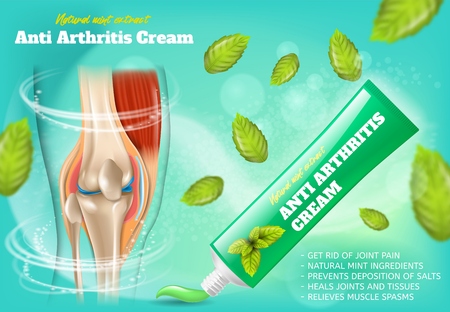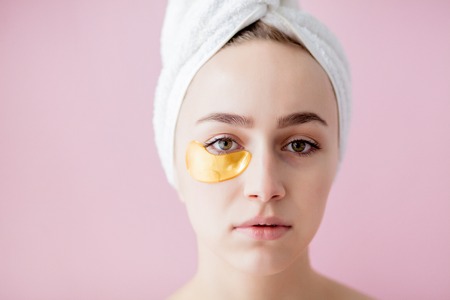Understanding the Basics of Ayurvedic Skincare
When it comes to skin health, Ayurveda stands out for its deep-rooted belief in natural ingredients and holistic care. For centuries, Indian households have trusted Ayurveda to address everything from dullness to persistent skin troubles. But what makes this ancient wisdom so relevant today? The answer lies in Ayurveda’s focus on harnessing the power of herbs, oils, and powders that are easily found in Indian kitchens—think turmeric, besan (gram flour), sandalwood, and tulsi. Unlike chemical-laden products, these time-tested remedies work gently to remove dead skin cells while nurturing your skin’s natural balance. Modern skincare problems like pollution, stress, and harsh weather can take a toll on your skin, leading to clogged pores and rough texture. Ayurveda addresses these issues at their root by promoting detoxification and restoration using nature’s own ingredients. Whether you live in Mumbai or Chennai, understanding Ayurvedic skincare is all about respecting your prakriti (unique body constitution) and choosing solutions that work in harmony with your lifestyle. Let’s explore how you can apply this traditional approach right at home and create an effective Ayurvedic scrub that brings out your skin’s true glow.
Choosing Authentic Indian Ingredients
When crafting an Ayurvedic scrub at home, selecting the right ingredients is crucial for both effectiveness and staying true to Indian traditions. Ayurveda, deeply rooted in Indian culture, emphasises natural solutions sourced from locally available herbs and kitchen staples. Let’s explore some of the most popular ingredients—besan (gram flour), haldi (turmeric), sandalwood, and neem—and understand how each one contributes to removing dead skin and revealing a radiant glow.
Popular Ayurvedic Ingredients for Scrubbing
| Ingredient | Local Name | Main Benefits | Role in Dead Skin Removal |
|---|---|---|---|
| Besan | Gram Flour | Naturally exfoliates, absorbs excess oil, brightens complexion | Gently scrubs away dead cells without irritation |
| Haldi | Turmeric | Anti-inflammatory, antibacterial, enhances skin tone | Promotes healing while helping shed dead skin layers |
| Sandalwood | Chandan | Cools skin, soothes irritation, imparts fragrance | Softens dead skin and leaves a smooth texture post-scrub |
| Neem | Neem Leaves/Powder | Cleanses pores, fights bacteria, reduces acne marks | Aids in deeper cleansing and removal of impurities along with dead cells |
The Importance of Authenticity in Ingredient Selection
In India, authenticity matters—especially when it comes to self-care rituals like scrubbing. Always source your besan and haldi from trusted local brands or markets. For sandalwood and neem, choose pure powders or freshly ground paste if possible. Avoid synthetic additives; they can irritate the skin or reduce the efficacy of your homemade scrub. Remember, the closer your ingredients are to their natural state, the better results you’ll see on your skin.
Pro Tip: Understand Your Skin Type Before Mixing Ingredients
If you have oily skin, besan and neem are excellent choices due to their oil-absorbing properties. For dry or sensitive skin, add a little curd or honey to your base mix with sandalwood for extra moisture. Customising based on your unique needs ensures you get maximum benefit from these age-old Indian remedies.

3. Step-by-Step Guide to Making Your Own Ayurvedic Scrub
Gathering the Essentials: Household Ingredients
To prepare an authentic Ayurvedic scrub at home, you don’t need exotic ingredients or a trip to the bazaar—simple staples from your kitchen will do. For a basic yet effective scrub, gather these: 2 tablespoons of besan (gram flour), 1 tablespoon of turmeric powder, 2 tablespoons of dahi (curd/yogurt), and 1 teaspoon of honey. For those with sensitive skin or a pitta dosha imbalance, consider using sandalwood powder instead of turmeric. If your skin is dry (vata type), add a teaspoon of cold-pressed coconut oil for extra nourishment.
Mixing Proportions and Method
In a clean bowl, combine besan and turmeric (or sandalwood powder) first. Slowly add dahi and mix until it forms a thick paste; avoid making it too runny so it can cling to your skin. Finally, stir in honey for its natural antibacterial properties. If you’ve added coconut oil, blend well until the mixture is consistent. Mix gently—Ayurveda values intention and calmness even in preparation.
Practical Application & Dosha Balancing Tips
Apply the paste evenly on damp skin after showering. Massage gently in circular motions—never harshly—focusing on areas prone to roughness like elbows and knees. For vata types, use soft, warm strokes; for pitta, keep movements light and cool; for kapha, apply a bit more pressure to stimulate circulation. Leave the scrub on for 5-10 minutes before rinsing with lukewarm water. Pat your skin dry and finish with a light application of pure almond oil or sesame oil according to your dosha needs. Repeat twice weekly for naturally glowing, healthy skin without any harsh chemicals.
4. Applying the Scrub the Right Way
Using your homemade Ayurvedic scrub effectively is crucial for achieving radiant skin without causing irritation, especially given Indian skin types and our unique climate. It’s not just about what you apply, but how you apply it that determines results. Here are practical tips for massaging, timing, and frequency to suit Indian conditions:
Ideal Massage Techniques
Gently massage the scrub in circular motions, focusing on rough areas like elbows, knees, and feet. Always move your fingers in upward circles—this not only removes dead skin but also boosts blood circulation. Avoid vigorous rubbing to prevent microtears or redness.
| Body Area | Recommended Motion | Duration (Seconds) |
|---|---|---|
| Face | Small, gentle circles with fingertips | 30-40 |
| Arms & Legs | Larger circular movements using palms | 60-90 |
| Knees & Elbows | Firm yet gentle scrubbing in circles | 40-60 |
| Feet | Back-and-forth plus circular motion | 60-90 |
Timing Matters: How Long Should You Scrub?
Aim for 5–7 minutes per session. Over-scrubbing can strip natural oils, while under-scrubbing may leave dead skin behind. For best results, use lukewarm water before and after scrubbing to open pores and rinse away residue.
Frequency According to Indian Weather & Pollution Levels
| Season/Condition | Recommended Frequency | Reasoning |
|---|---|---|
| Summer (Hot & Humid) | 2 times a week | Sweat and dust clog pores faster; regular exfoliation helps keep skin clear. |
| Winter (Dry) | Once a week | Avoid over-exfoliating dry skin; focus on hydration post-scrub. |
| Urban/High Pollution Areas | 2–3 times a week (gentle scrubs) | Pollution particles settle on skin; frequent but mild exfoliation is safer. |
| Rural/Clean Air Areas | Once every 10 days | Lesser pollution means slower buildup of dead cells. |
Troubleshooting: What If You Experience Irritation?
If you notice redness or discomfort, reduce frequency or switch to a milder base like besan with curd. Always moisturise after scrubbing with coconut oil or aloe vera gel, both common in Indian households.
Applying your Ayurvedic scrub correctly ensures maximum benefit while respecting the needs of Indian skin—making your skincare routine both safe and effective!
5. Aftercare: Nourishing and Protecting Indian Skin
After using your homemade Ayurvedic scrub to remove dead skin, it’s essential to lock in moisture and shield your skin from environmental stressors—especially in India’s varying climates. The right aftercare can make a huge difference in how radiant and healthy your skin feels.
Seal in Moisture the Natural Way
Instead of commercial lotions, consider traditional Indian favorites:
Coconut Oil
This household staple is perfect for most Indian skin types. Coconut oil penetrates deeply, locking in moisture without clogging pores. Warm a small amount between your palms and gently massage into damp skin after your scrub session.
Ghee
A time-honored remedy, ghee is loaded with healthy fats and antioxidants. It soothes dryness, especially during winters or in dry regions like Rajasthan. Apply a thin layer on rough patches or all over the body for intense nourishment.
Rose Water
If you prefer something lighter—especially during hot, humid summers—rose water is ideal. Spritz it onto your face and body post-scrub for hydration, cooling, and toning benefits. It helps calm sensitive or irritated skin common after exfoliation.
Post-Scrub Routines for Indian Climates
- Hot & Humid: Choose rose water or a few drops of coconut oil to prevent stickiness while staying hydrated.
- Cold & Dry: Opt for ghee or a richer layer of coconut oil to combat dryness and flaking.
- Urban Pollution: Seal skin with coconut oil, then use a light scarf to protect exposed areas when stepping out.
Pro Tips for Indian Men & Women
- Avoid harsh soaps post-scrub—they strip away protective oils.
- If you sweat a lot, use lightweight rose water followed by dabbing excess moisture with a soft towel.
- Apply your chosen moisturizer within 5 minutes of rinsing off the scrub to maximize absorption.
Treating your skin with these natural aftercare steps not only boosts the benefits of your Ayurvedic scrub but also keeps Indian skin resilient against climate extremes, pollution, and daily stress.
6. FAQs and Common Mistakes to Avoid
Frequently Asked Questions by Indians New to DIY Skincare
Q1: Can I use kitchen ingredients for an Ayurvedic scrub?
Absolutely! Most Indian households have chickpea flour (besan), turmeric, milk, curd, and honey – all staples in nani and dadi’s traditional recipes. Just make sure your ingredients are fresh and organic whenever possible.
Q2: How often should I use the scrub?
For men and women with normal to oily skin, twice a week is ideal. If you have sensitive or dry skin, once a week is enough. Remember, over-exfoliation can irritate the skin, as our elders always say: “Zyada bhi accha nahi hota.”
Q3: Can I store homemade scrubs?
Most Ayurvedic scrubs are best used fresh. If you must store, keep it in an airtight container in the fridge for up to three days. Avoid storing scrubs with milk or curd for more than 48 hours to prevent spoilage.
Cultural Advice for Men and Women
Men often think skincare is only for women, but as dadi would say, “Beta, twacha sabki ek jaisi hai.” Both men and women can benefit from natural exfoliation. Men who spend long hours outdoors might notice better results if they use the scrub after returning home in the evening. Women can include a gentle massage using upward strokes as part of their routine, just like our grandmothers did before special occasions.
Common Mistakes to Avoid
1. Using Too Much Pressure
Scrubbing too hard can damage your skin barrier. Gently massage the scrub with your fingertips; let the ingredients do their job.
2. Ignoring Patch Tests
Some people are allergic to natural ingredients like turmeric or honey. Always test on a small area of your arm before applying on your face, just as nani would insist before any new remedy.
3. Applying on Broken or Sunburned Skin
Avoid scrubbing if you have cuts, acne flare-ups, or sunburns. Let your skin heal first – patience pays off, as dadi would remind us.
4. Skipping Moisturisation After Scrubbing
Your skin needs hydration after exfoliation. Apply coconut oil or aloe vera gel post-scrub, following age-old family wisdom for glowing skin.
Final Thought from Nani & Dadi’s Wisdom
Natural remedies take time but are gentle and effective. “Sabr ka phal meetha hota hai” – be patient and consistent, and soon you’ll see healthy, radiant skin without harsh chemicals.


